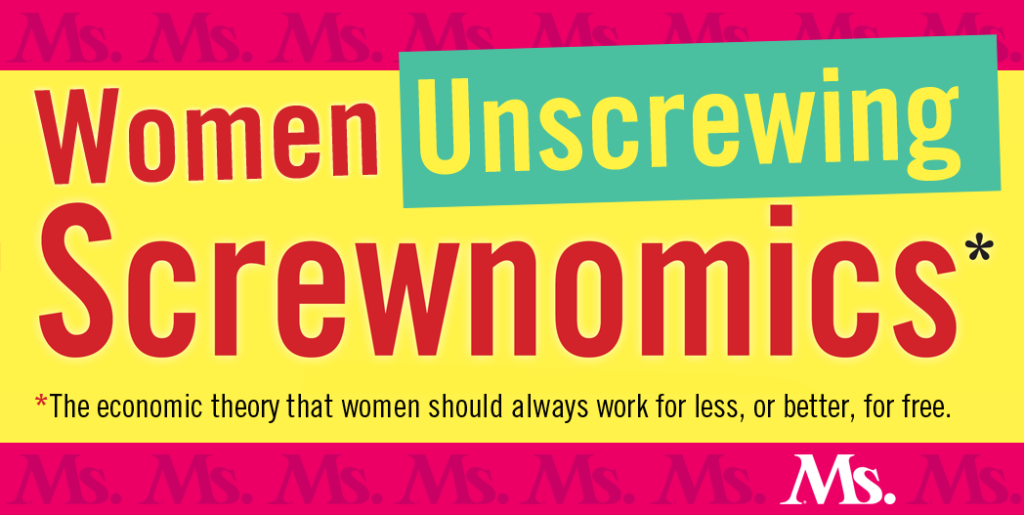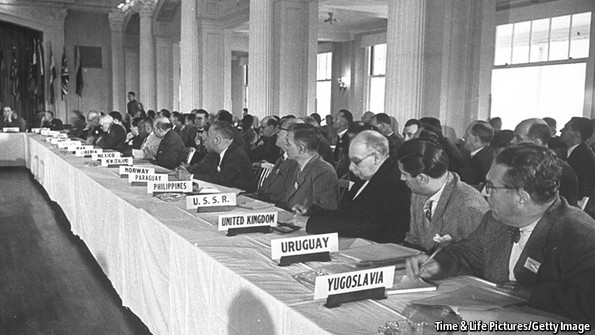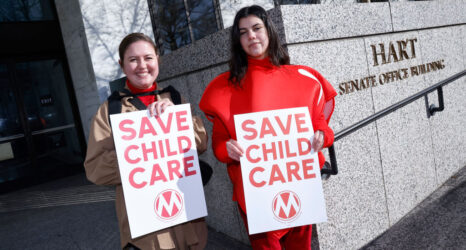
It’s time to talk about women’s economics with attitude. It’s time to laugh at what is often absurd and call out what is dangerous. By focusing on voices not typically part of mainstream man-to-man economic discourse, Women Unscrewing Screwnomics will bring you news of hopeful and practical changes and celebrate an economy waged as life—not as war.
Seventy-five years ago, Franklin Delano Roosevelt gathered monetary thinkers of the Allied forces to a secret meeting in Bretton Woods, New Hampshire. He had already adopted a then-new national income report: the GDP, or Gross Domestic Product, whose numbers had financed war efforts. Economic elites—all-male, of course—were next called upon to create global financial institutions to relieve poverty and end trade and currency battles that had led to WWII.

Bretton Woods’ resulting International Monetary Fund (IMF) and The World Bank today are thought by many to be more oppressive than poverty-alleviating. But the inequality writing had been on the wall in 1944.
In that men-only world of money, a woman in “free” nations was denied bank credit or accounts without a male co-signer. (This wouldn’t change in the U.S. until 1974.) Financial inequality most often still wears a female face worldwide and—along with the children she most often cares for—she’s the majority not just of the poor, but of our global population.
So, when Silicon Valley’s Galia Benartzi organized a Global Economic Visioning Summit to mark the 75th anniversary at Bretton Woods, she made sure half its speakers were women.
Dr. Riane Eisler, renowned women’s advocate and author of The Real Wealth of Nations, gave a keynote on July 23, calling out old paradigms of thinking that threaten our survival. One important case in point:
“Consider that the most popular measure, GDP, includes activities that actually harm and even take life. Making cigarettes, the resulting medical and funeral costs are great for GDP. Fast foods that result in obesity, heart disease, diabetes, strokes, and even the funeral costs; that’s all on the plus side of GDP.
But not only does GDP put negatives in as positives; it fails to include the huge economic value of the essential activities in the three economic sectors ignored in present thinking: the natural economy, the volunteer economy, and the household economy.”
Eisler’s 1987 book, The Chalice and the Blade, first named two cultural patterns at opposite ends of a continuum of social possibilities: dominators, a hierarchy of men privileged over women, children and nature, enforced by violence—and partnership, more flexible and egalitarian.
Most often we’ve heard that human ferocity is our nature, and necessary. Beginning with Cain and Abel, that tale spans to 2001: A Space Odyssey, with an imagined ape beginning, bone weapon in hand.
But Eisler argues in her latest book—co-authored with anthropologist Douglas P. Fry and issued this summer from Oxford University Press—that for most of our past, our species lived as small bands of hunter-gatherers who fled or negotiated conflicts; Nurturing Our Humanity: How Domination and Partnership Shape Our Brains, Lives and Future explains a social evolution of two million years, one far more varied and peaceable than our briefer 5000 years of murderous war-making.
Kings and generals took command as more complex societies developed hierarchies with militaries. But older, more egalitarian patterns of our longer prehistory persisted, since no society can function without many mutual and caring connections. No society was ever purely a partnership utopia, but challenges to dominator patterns began to widen when the divine right of kings was first questioned—only about 400 years ago.
In modern times, an astonishing variety of cooperative egalitarian social arrangements exist, explain Fry and Eisler, notably those among the Nordic countries, the four million Minangkabau of West Sumatra, the Teduray in the Philippines and the Mosos in China. We’ve snubbed their quiet and hopeful clues about who we can be, and who we most often have been.
Nurturing Our Humanity returns often to the latest scientific studies of our neurochemical processes that prepare us for “fight, flight, or dissociation.” It includes women’s survival techniques, named “tending and befriending.” The latter are used by groups lacking status far more often than dominant men wage war and duke it out. Similarly, researchers find young toddlers inherently helpful without expectation for reward, save the increased serotonin that yet more researchers have found measurable whenever we human beings are helpful to another. We feel good about helping. Eisler and Fry make the case for that being our most essential evolutionary advantage, not our war-making.
We now know that the way children are raised for the first 20 years of their life affects their neural wiring, their bodies’ hormonal mixtures and their brains’ development. Children who experience fear and trauma growing up have more trouble learning and are less able to adapt to new situations. Stressed brains become more rigid, especially those parts that help us shift gears in the face of new developments. Stressed brains omit details and don’t see accurately. Anxious brains cling to authoritarian figures whose dominator patterns perpetuate the stress and abuse that harmed them as children.
In a similar way, we have clung to war-waging GDP numbers. Eisler’s Center for Partnership Studies has developed new Social Wealth Economic Indicators (SWEIs). But what’s needed, Dr. Eisler told Ms., is an easy-to-understand index number or two, similar to the GDP. She hopes to raise funding for its design. Filling in where GDP leaves big holes, SWEIs recognize that care and education in early childhood and throughout life relates to developing high-quality human capital and wider prosperity, as do human connections to a healthy natural environment.
“Some people may say we can’t quantify the value of care work,” said Eisler this month at Bretton Woods, “and you can’t quantify all of its value. But we are quantifying its economic value, and it’s huge.” She cited a recent Australian report on unpaid “caring” household work valued at $345 billion, three times that nation’s financial and insurance sector, she told the audience—“yet none of this information is found in conventional economic treatises.”
Eisler says that SWEIs, unlike other GDP alternative measures, like Genuine Progress Indicators and Gross National Happiness, pay close attention to childhood and gender. SWEIs not only measure economic outcomes, but also reveal the relationship between caring inputs and economic returns, such as family-friendly laws and investment in planet-friendly fuels.
It is no coincidence, says Eisler, that the U.S. invests less than half as much as any other developed nation in its families, and also has the highest infant and maternal mortality rates and the highest child poverty rates of any developed nation in the Organization for Economic Cooperation and Development (OECD).
When GDP hides such folly, it makes little sense to just grow it.





